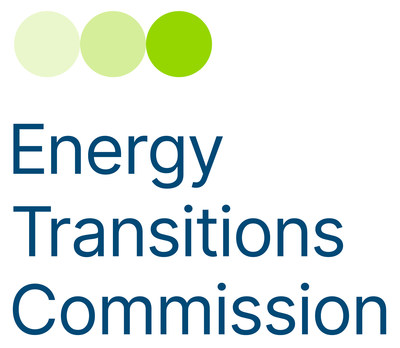| NEW REPORT FROM THE ENERGY TRANSITIONS COMMISSION
LONDON, July 13, 2022 /PRNewswire/ — In its latest report Carbon Capture, Utilisation and Storage in the Energy Transition: Vital but Limited, the ETC describes the complimentary role carbon capture, utilisation and storage (CCUS) has alongside zero-carbon electricity, clean hydrogen and sustainable low-carbon bioresources in delivering a net-zero economy by mid-century. Massive clean electrification is the backbone of global decarbonisation. However, electrification, hydrogen and sustainable low-carbon bioenergy combined cannot reduce gross emissions completely to zero. In addition, it is almost certain that cumulative CO2 emissions between now and 2050 will exceed the “carbon budget” consistent with a 1.5°C climate objective. So, to limit temperature rises to 1.5°C, carbon removals will be required alongside deep and rapid cuts in emissions. Carbon Capture, Utilisation and Storage (CCUS) must therefore play three vital but limited roles in the energy transition:
“As a low-carbon, but not zero-carbon technology, CCUS has a complimentary role to play in decarbonisation alongside massive clean electrification, hydrogen and sustainable bioresources. Collective action by government, corporates and investors is needed now to ensure that CCUS can scale-up and play this vital but limited role in industrial decarbonisation and deliver some of the carbon removals essential to keeping 1.5°C alive,” Adair Turner, Chair, ETC. CCUS and the path to net-zero The ETC’s report assesses the roles which CCUS must play on the path to net-zero and what must happen to ensure it can do so. The key conclusions are:
The need to accelerate progress in the 2020s Today, just 40 Mt/year of carbon dioxide is captured, from around 30 facilities. Growth has been slow with multiple project cancellations. Partly this reflects improved economics for other routes to decarbonisation but also policy and coordination failures that must be addressed going forward. Early deployment in the 2020s is essential to achieve sufficient capacity by 2050 and reduce overall costs. Much of the growth – particularly of DACC – will occur after 2030 but significant development in the 2020s is needed to make this future build-out feasible. A plausible but ambitious deployment trajectory could see 0.8 GtCO2/year of carbon capture capacity operating by 2030 across a suite of technologies, at over 300 facilities. Achieving this will require action from governments and industry to reduce project development time, develop shared transport and storage infrastructure and ramp up investment. Investment in CCUS The total investment in CCUS infrastructure is estimated at up to $5 trillion by 2050. This is less than 5% of the total investment needed for the energy transition and equivalent to 0.1% of projected global GDP over this period. In the next decade, the bulk of the investment (90%) will be spent on point source capture, transport and storage, only circa 10% will be DACC related. DACC investments will however ramp up in subsequent decades. The majority of CCUS costs are in CO2 capture and typically reflect the concentration of CO2 in the gas stream, with more diffuse sources (e.g. air) requiring more energy to isolate the CO2 than higher concentration sources (e.g. fossil industrial processes). The private sector can finance most of the costs with both industry and governments playing a role in developing incentives (e.g. carbon pricing, low-carbon products), and developing shared transport and storage infrastructure via industrial hubs. “Recognising that CCUS is one vital tool in the decarbonisation portfolio, alongside others such as accelerating clean electrification, immediate action is required by government, corporates and investors to turn plans into reality and increase the deployment of high capture CCUS in the next decade. Reduced development time, strong regulation, greater investment and shared infrastructure models are all essential to make this possible,” said Ita Kettleborough, Director, ETC. 6 Key Actions by Government, Corporates & Finance in the 2020s Collective action by government, corporates and investors is crucial to achieving the scale of CCUS needed in the next decade. Six critical actions in the 2020s are:
To read the full report, visit: Notes to editors This report constitutes a collective view of the Energy Transitions Commission. Members of the ETC endorse the general thrust of the arguments made in this report but should not be taken as agreeing with every finding or recommendation. The institutions with which the Commissioners are affiliated have not been asked to formally endorse the report. For further information on the ETC please visit: https://www.energy-transitions.org. For link to the report and infographics, please visit: For a full glossary of terms please see the full report. CCUS is sometimes associated only with the capture of emissions from fossil fuel or industrial ‘point sources’. However for the purposes of this report, we include Direct Air Carbon Capture (DACC) and Bioenergy with carbon capture (BECC) as forms of carbon capture and storage technology. Both of these technologies can provide negative emissions and are forms of carbon dioxide removal. For a full list of supporting quotes, please visit: https://drive.google.com/file/d/11SduXXfC9_5S0hceugDxwCh6GtU3AEII/view?usp=sharing. To view our full commissioner list, please visit: https://drive.google.com/file/d/1nQOEXhK9NVIrUvQ4E7Wpz1VP_VK5QXtM/view?usp=sharing. Photo – https://mma.prnewswire.com/media/1857507/Energy_Transitions_Commission.jpg Logo – https://mma.prnewswire.com/media/1275002/Energy_Transitions_Commission_Logo.jpg (Disclaimer: The above press release comes to you under an arrangement with PRNewswire India and this publication takes no editorial responsibility for the same) |






